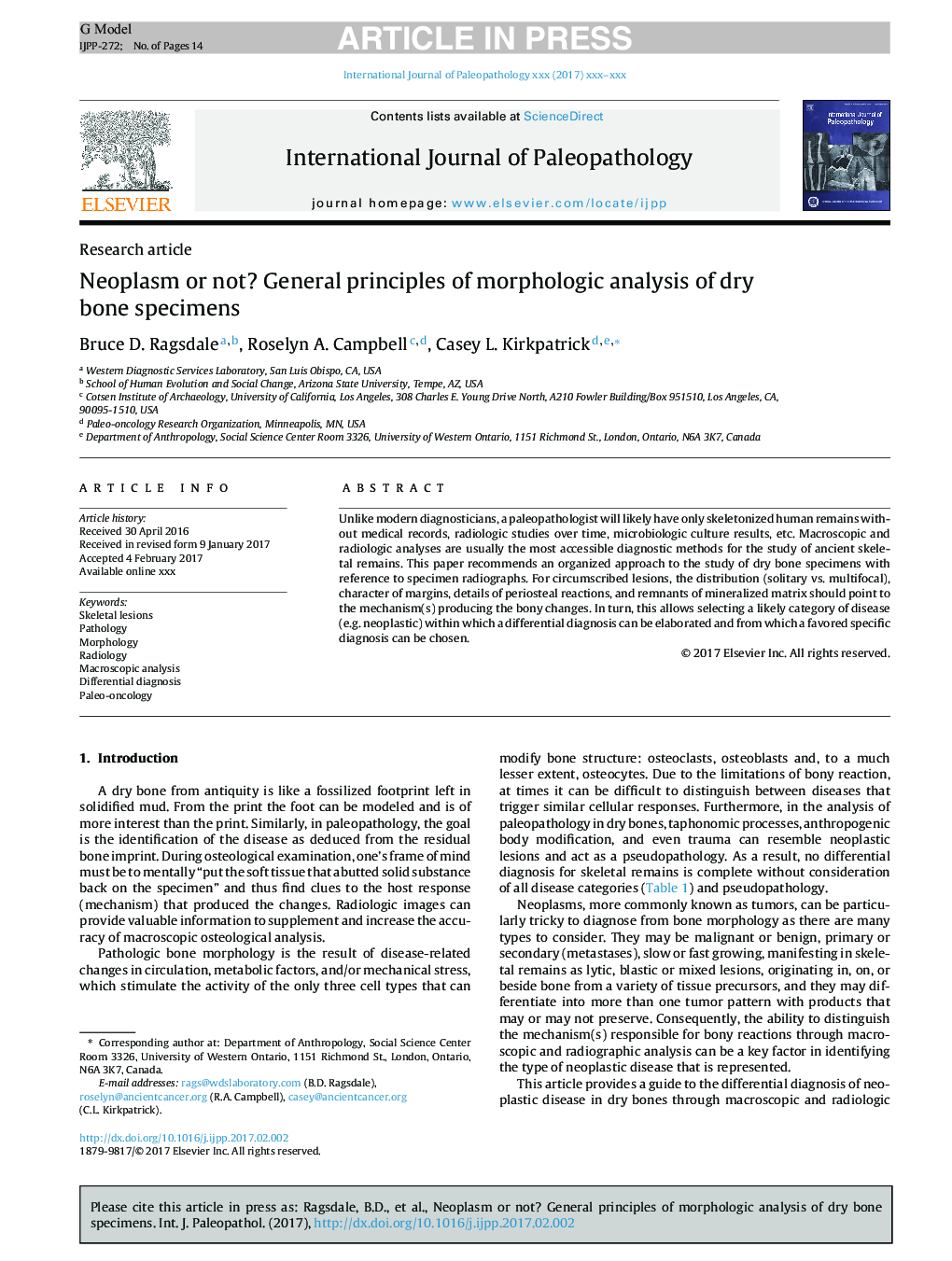| Article ID | Journal | Published Year | Pages | File Type |
|---|---|---|---|---|
| 6554758 | International Journal of Paleopathology | 2018 | 14 Pages |
Abstract
Unlike modern diagnosticians, a paleopathologist will likely have only skeletonized human remains without medical records, radiologic studies over time, microbiologic culture results, etc. Macroscopic and radiologic analyses are usually the most accessible diagnostic methods for the study of ancient skeletal remains. This paper recommends an organized approach to the study of dry bone specimens with reference to specimen radiographs. For circumscribed lesions, the distribution (solitary vs. multifocal), character of margins, details of periosteal reactions, and remnants of mineralized matrix should point to the mechanism(s) producing the bony changes. In turn, this allows selecting a likely category of disease (e.g. neoplastic) within which a differential diagnosis can be elaborated and from which a favored specific diagnosis can be chosen.
Related Topics
Life Sciences
Biochemistry, Genetics and Molecular Biology
Physiology
Authors
Bruce D. Ragsdale, Roselyn A. Campbell, Casey L. Kirkpatrick,
